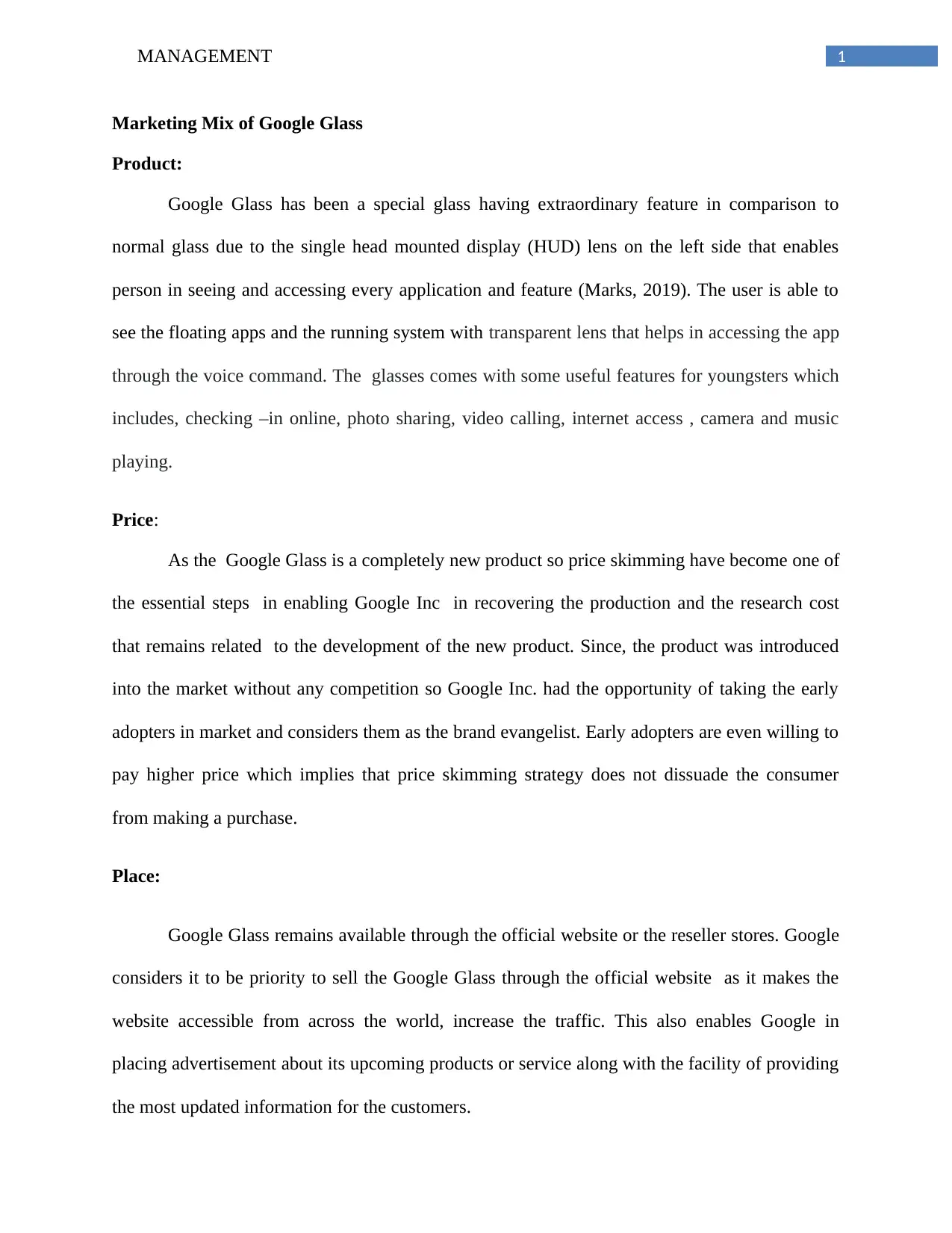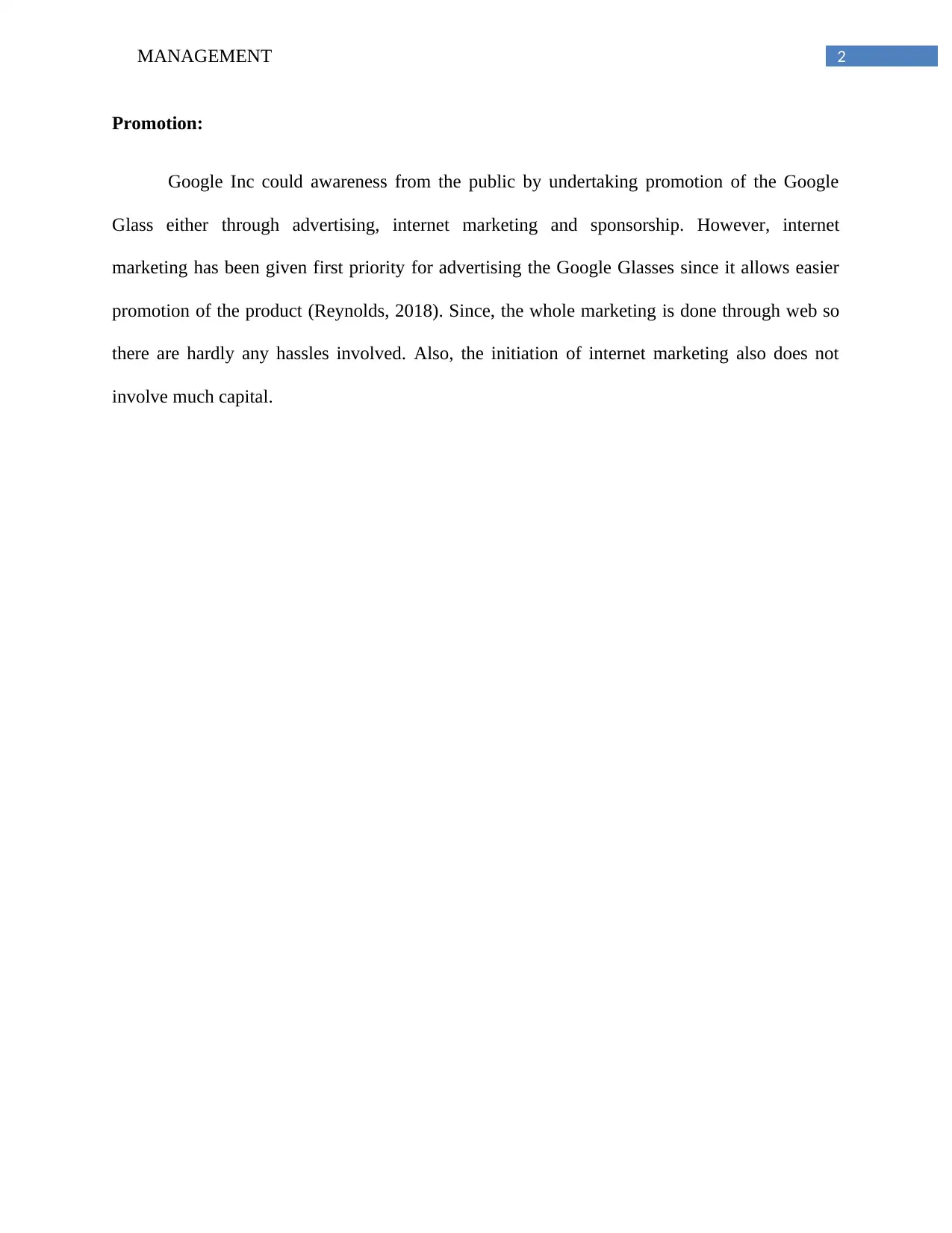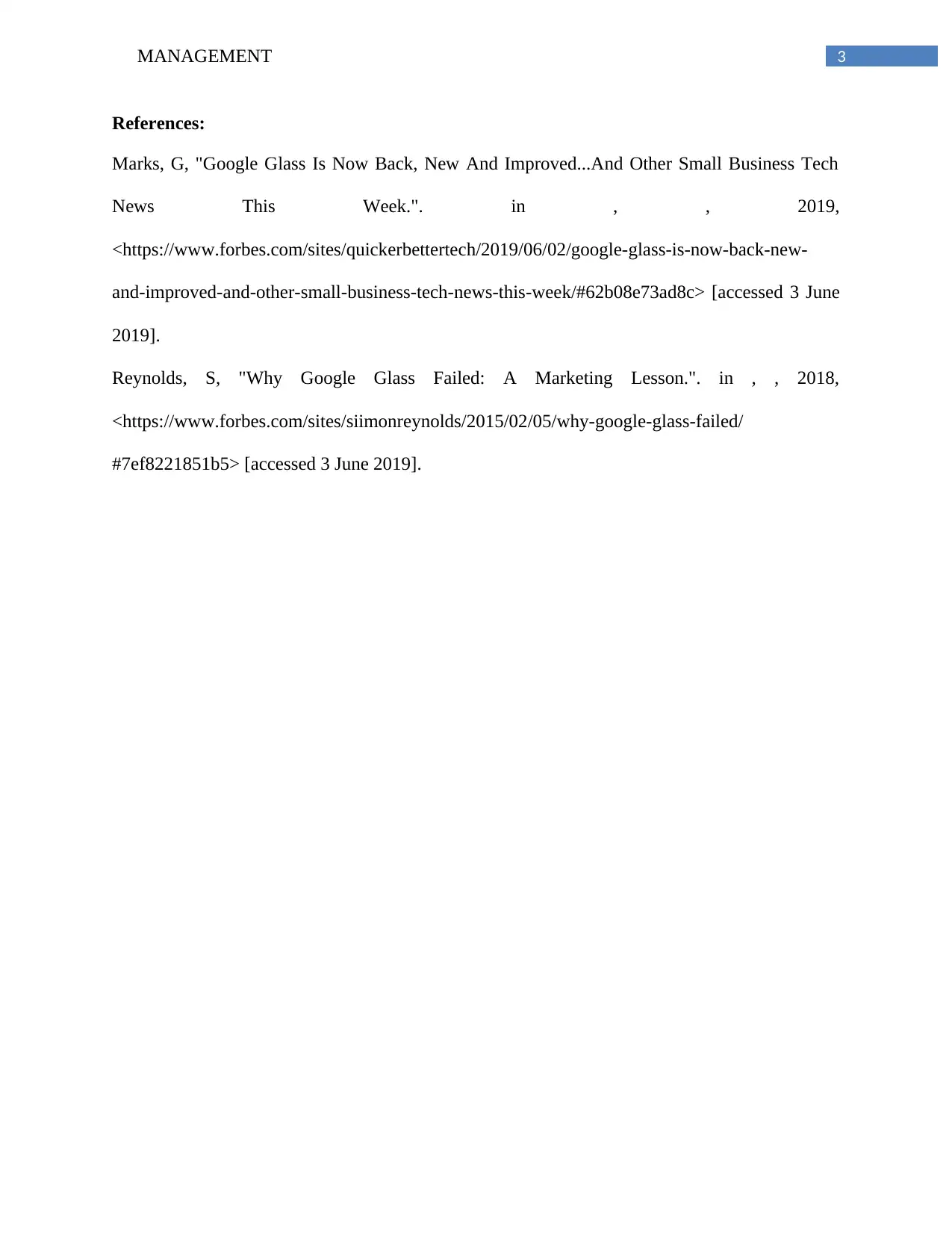Marketing Strategies for Google Glass: A Comprehensive Analysis
VerifiedAdded on 2023/01/20
|4
|470
|57
Report
AI Summary
This report provides a comprehensive analysis of the marketing strategies for Google Glass, examining its initial failures and proposing strategies for a potential "Google Glass 2.0." The report includes a STEEPLE analysis, Porter's Five Forces, SWOT analysis, and customer analysis to evaluate the external and internal factors influencing Google Glass's market performance. It then analyzes the marketing mix (product, price, place, and promotion) and recommends strategies to improve market penetration and consumer acceptance. The analysis aims to identify the most effective marketing approaches to target the ideal market segment, offering insights into how Google Glass could have achieved greater success. The report also includes an executive summary, introduction, conclusion and references.
1 out of 4











![[object Object]](/_next/static/media/star-bottom.7253800d.svg)